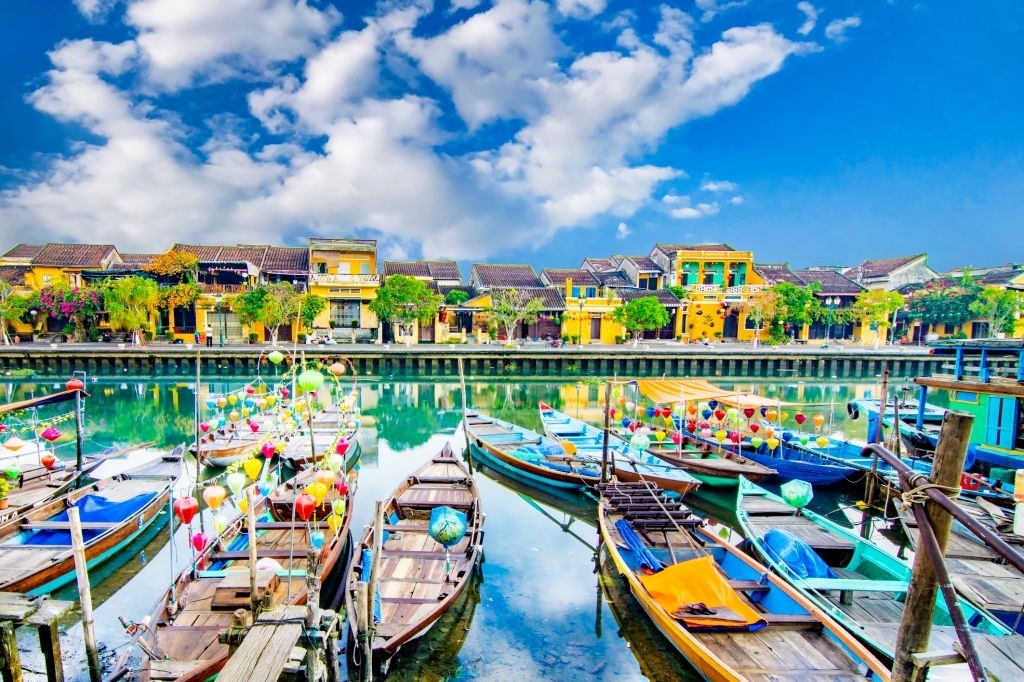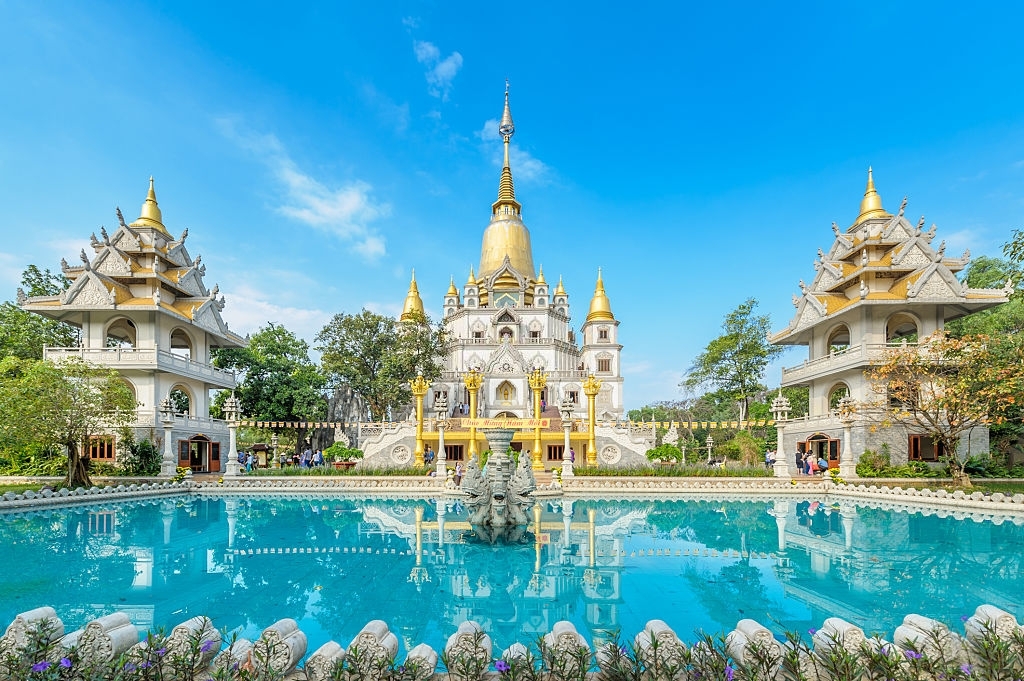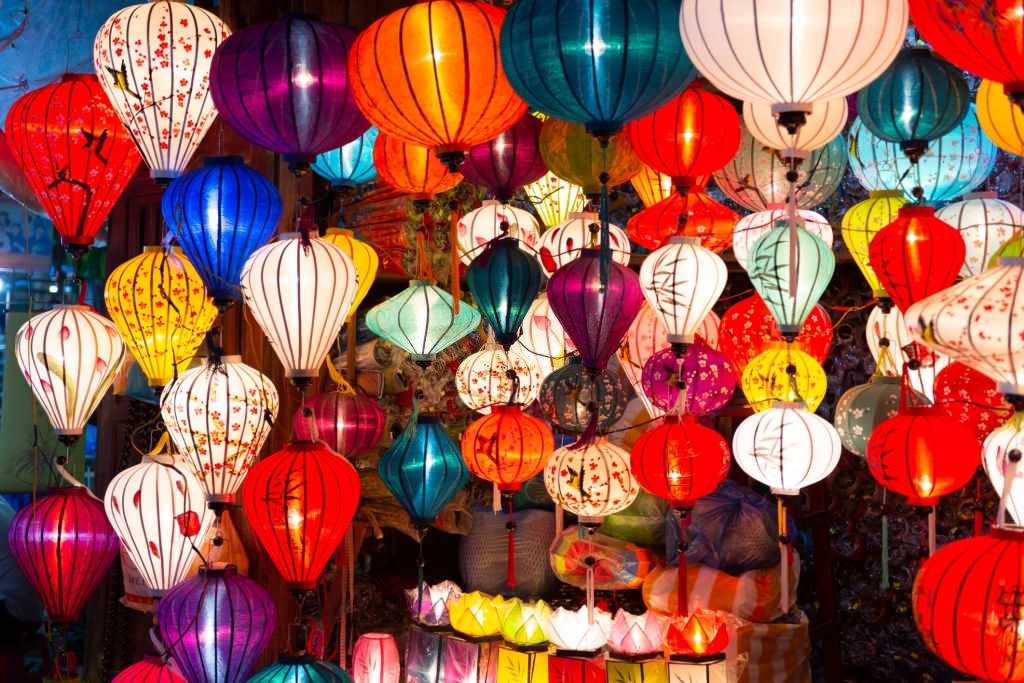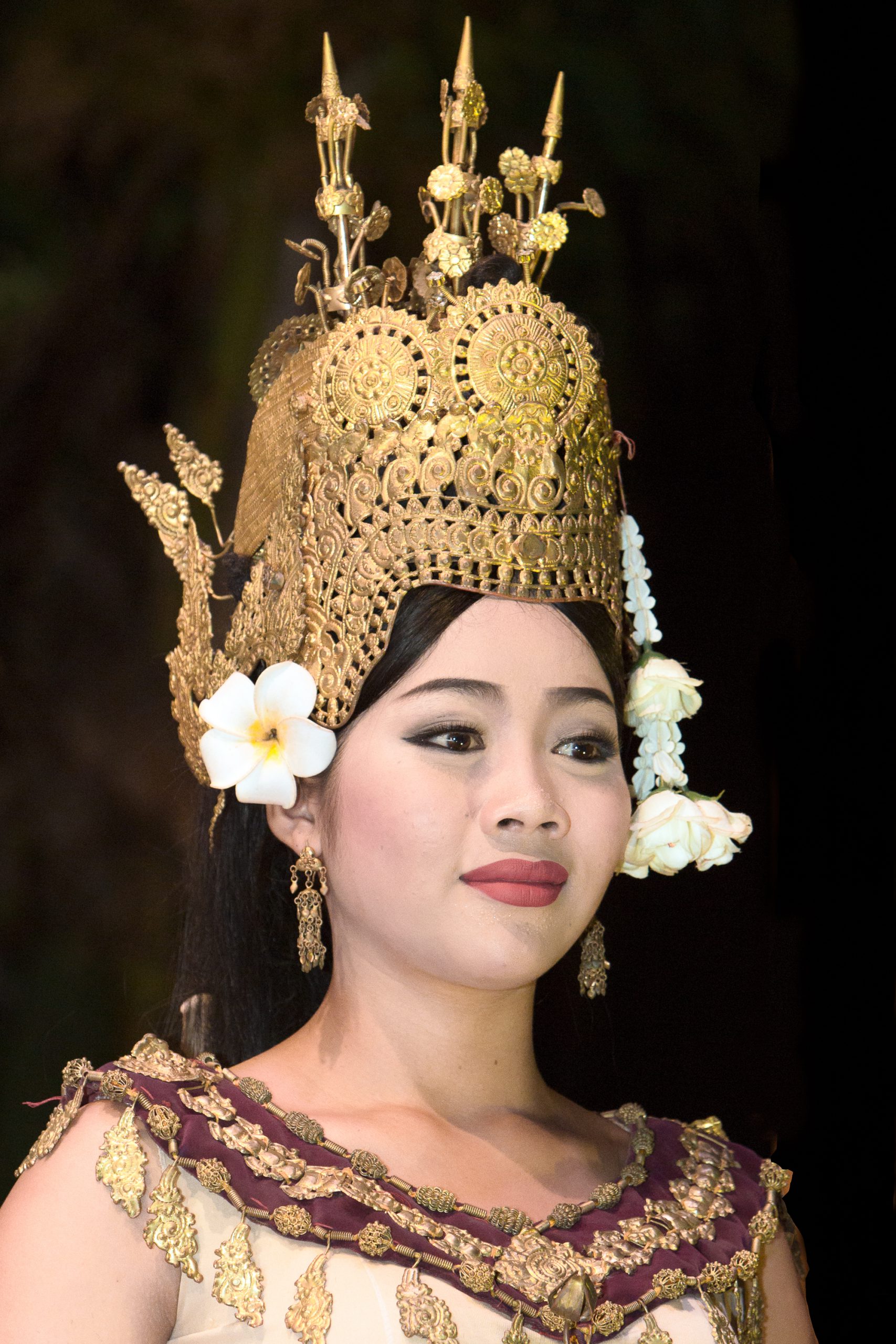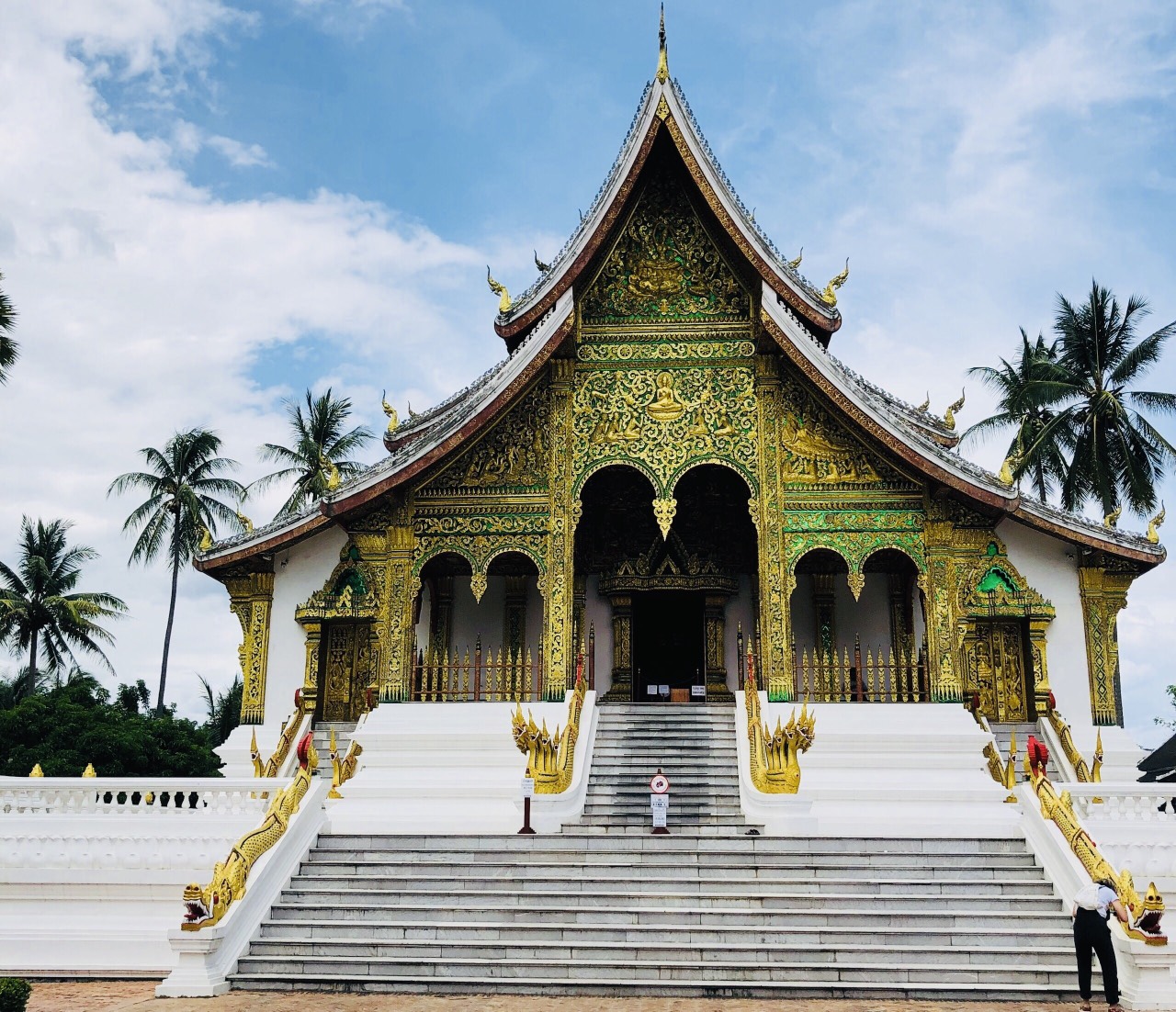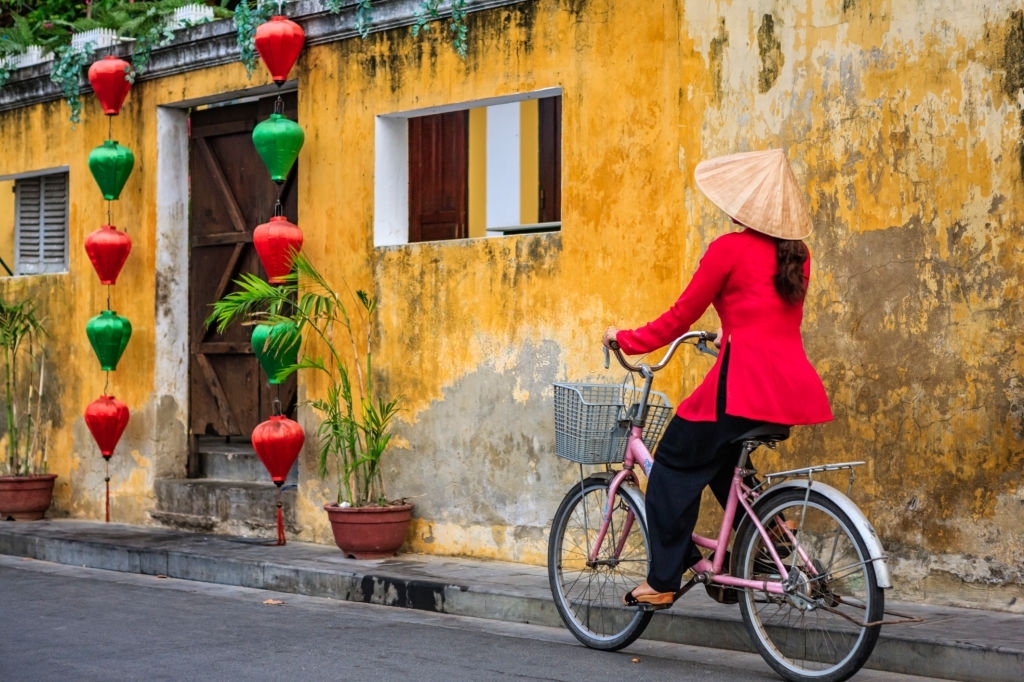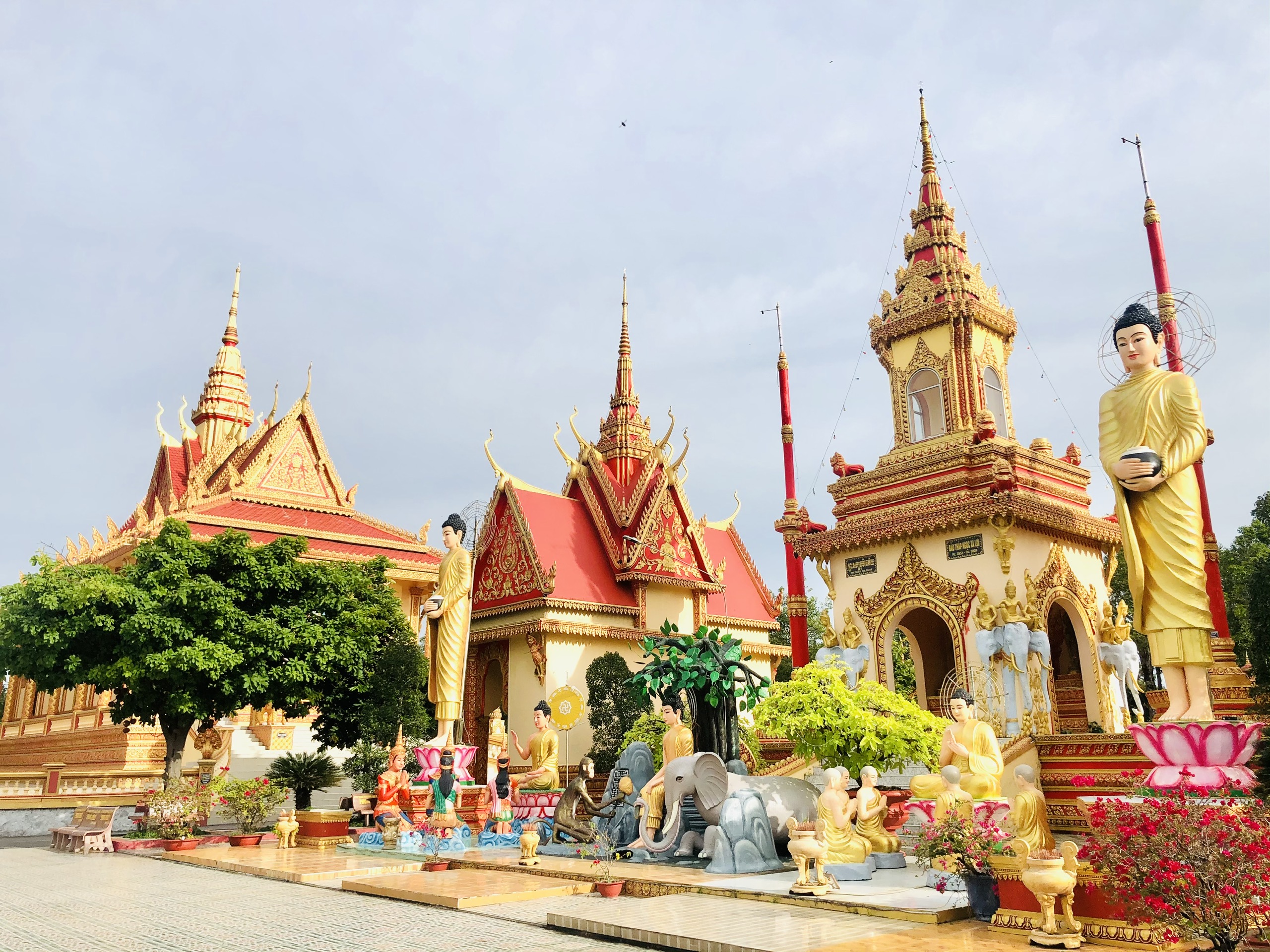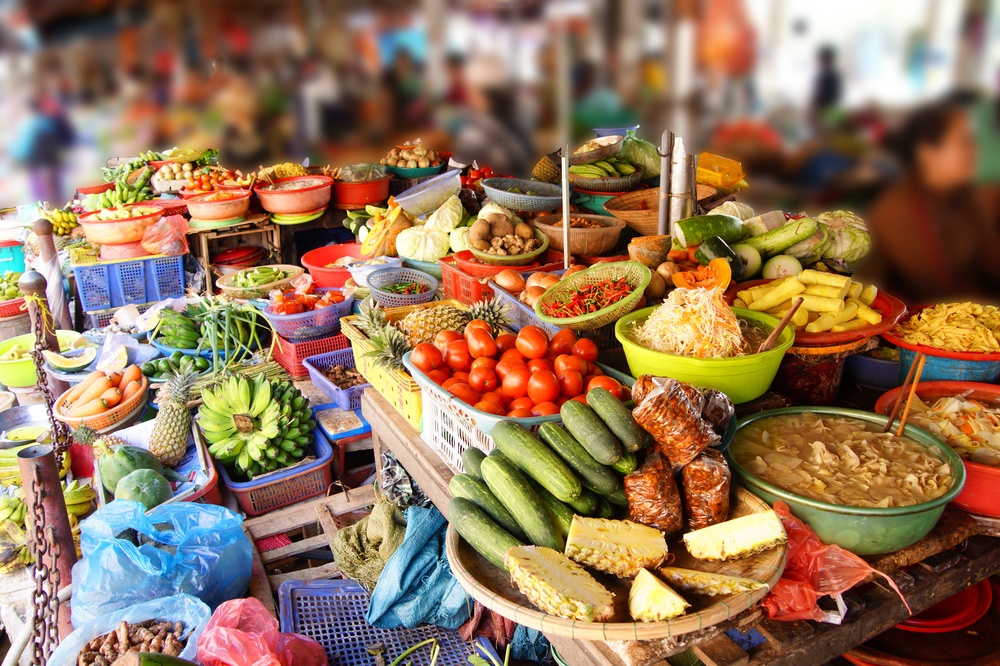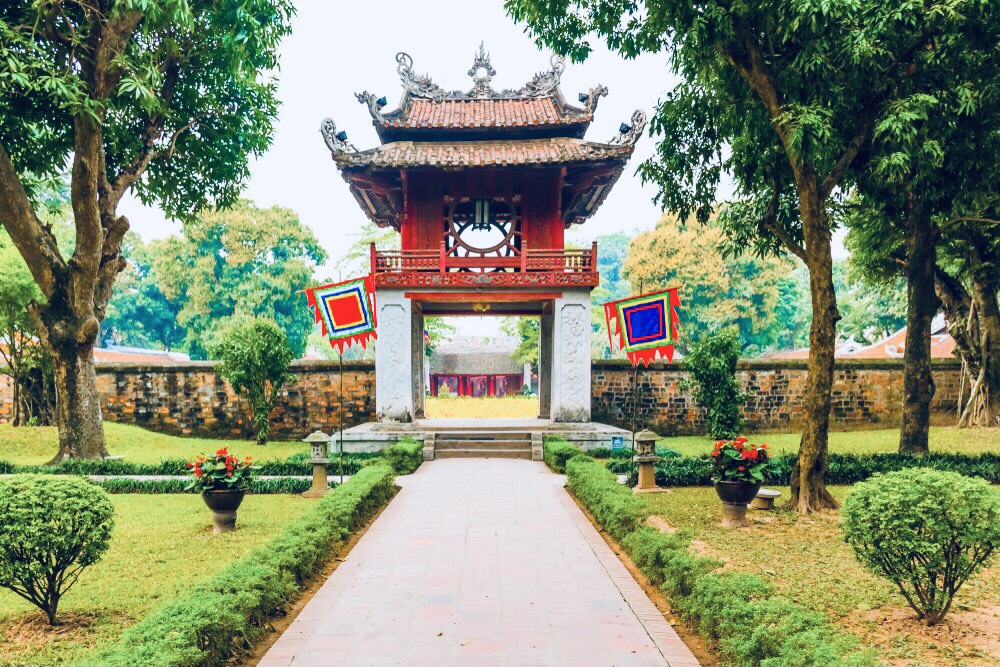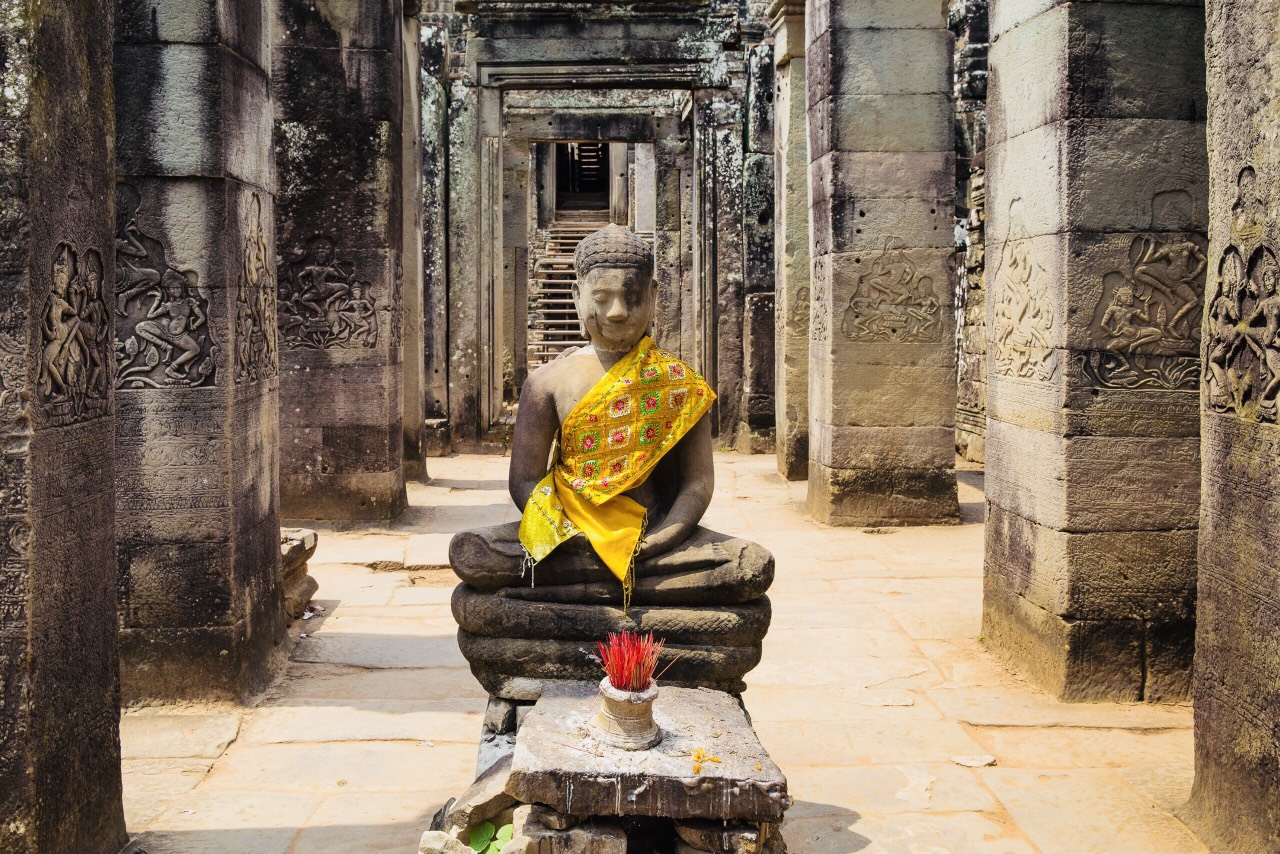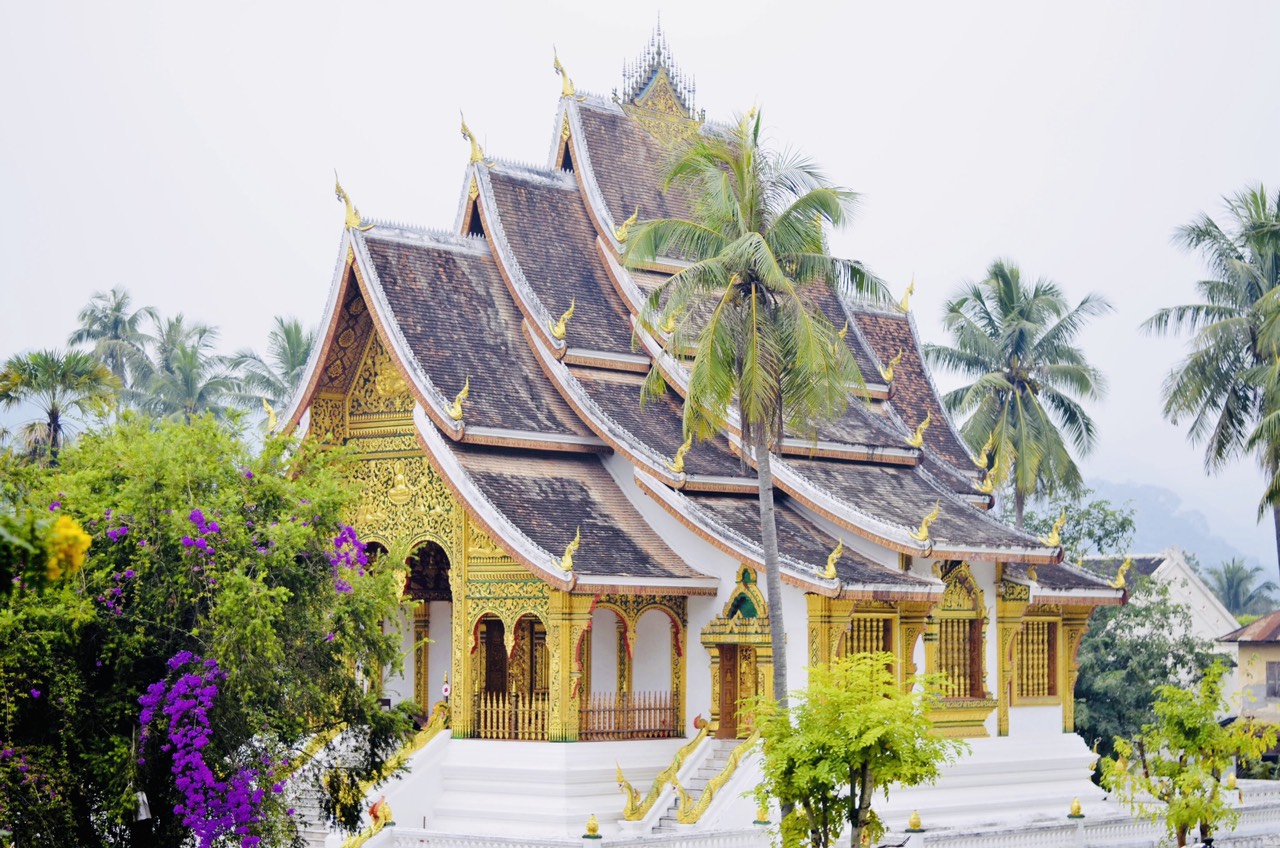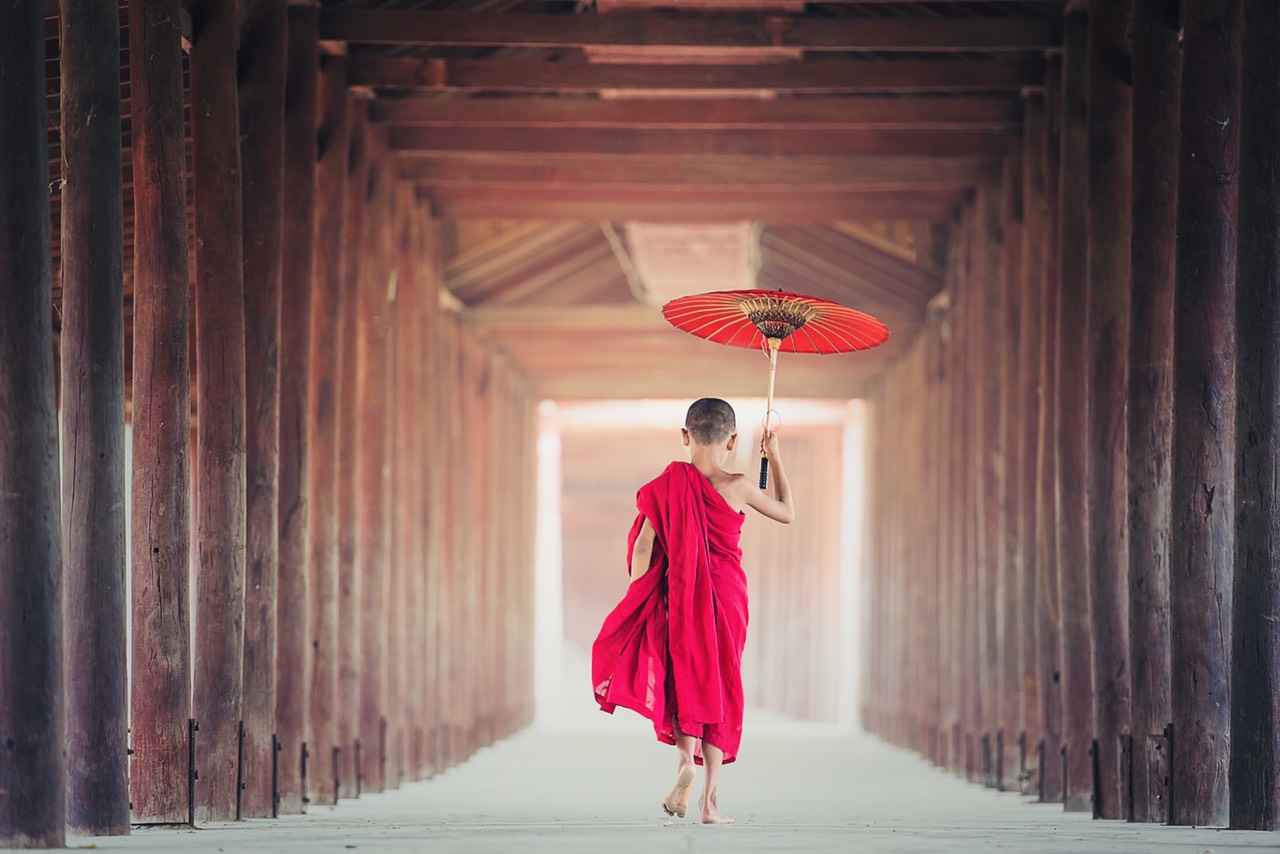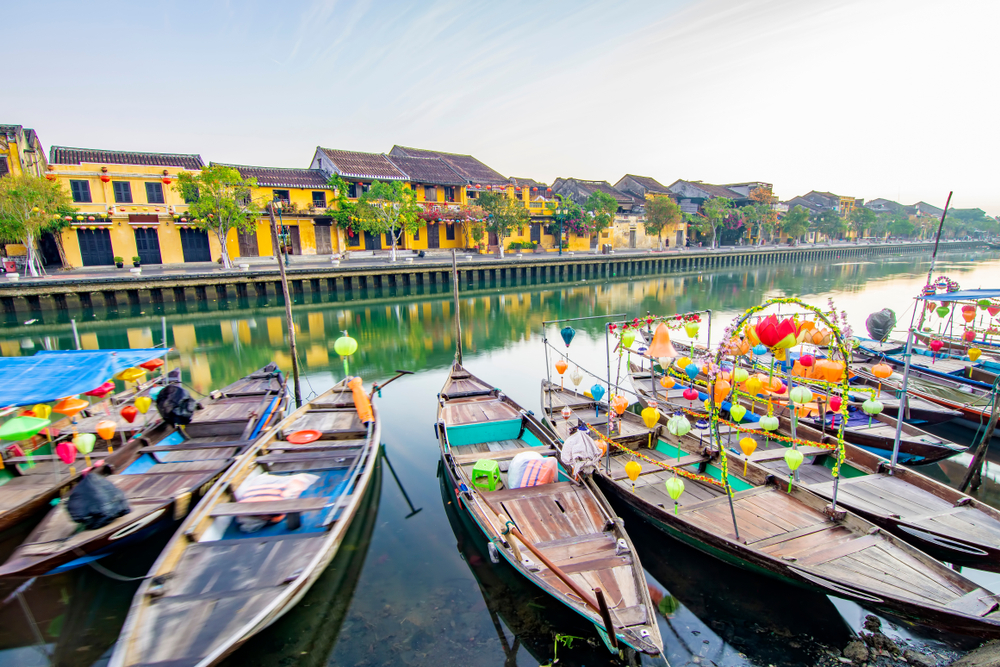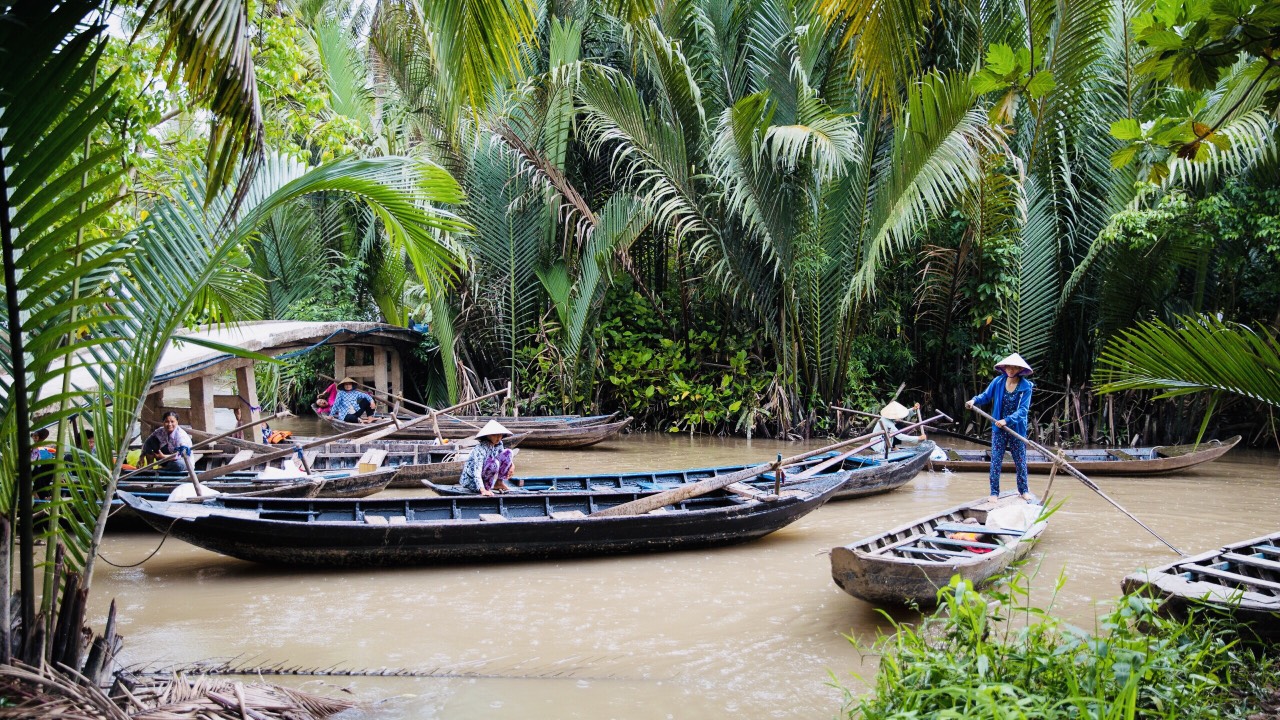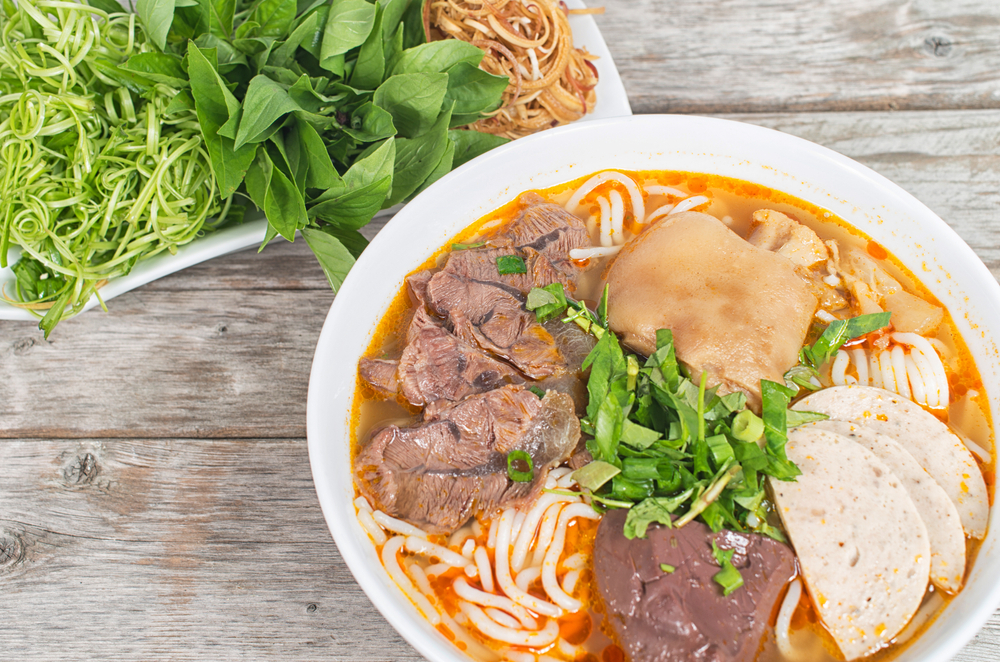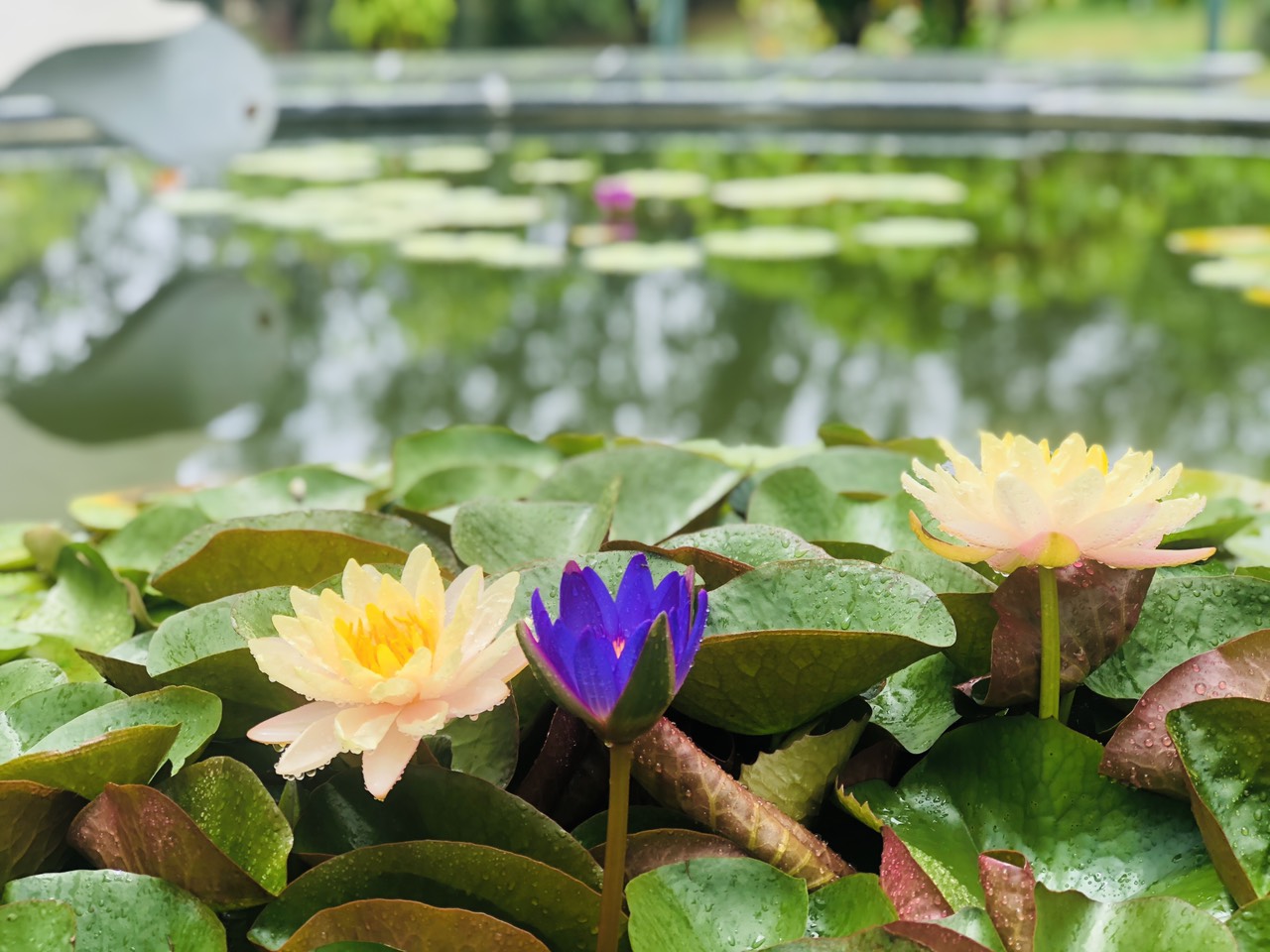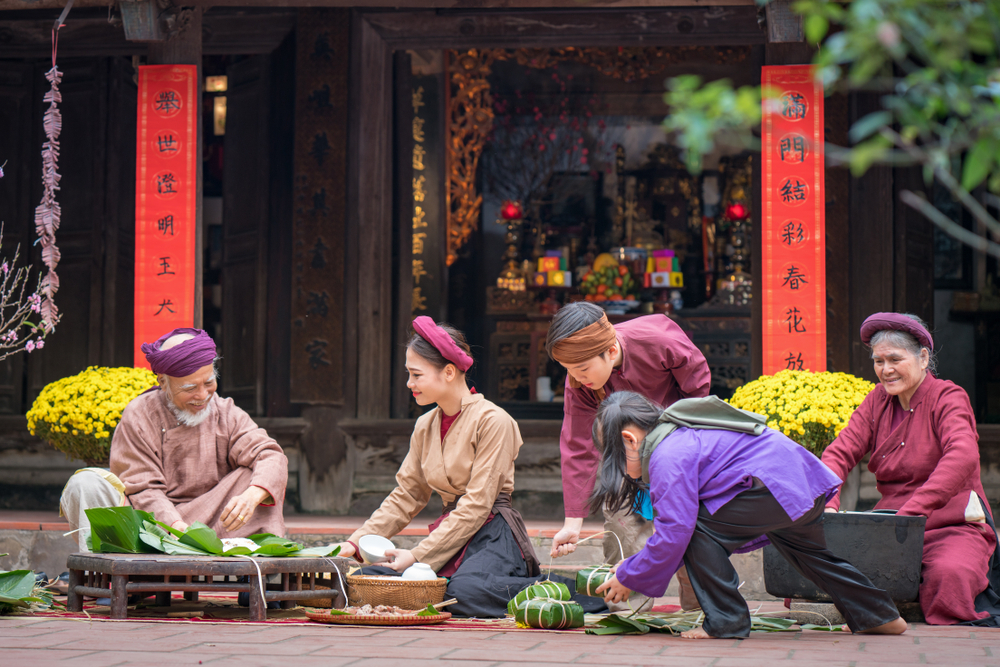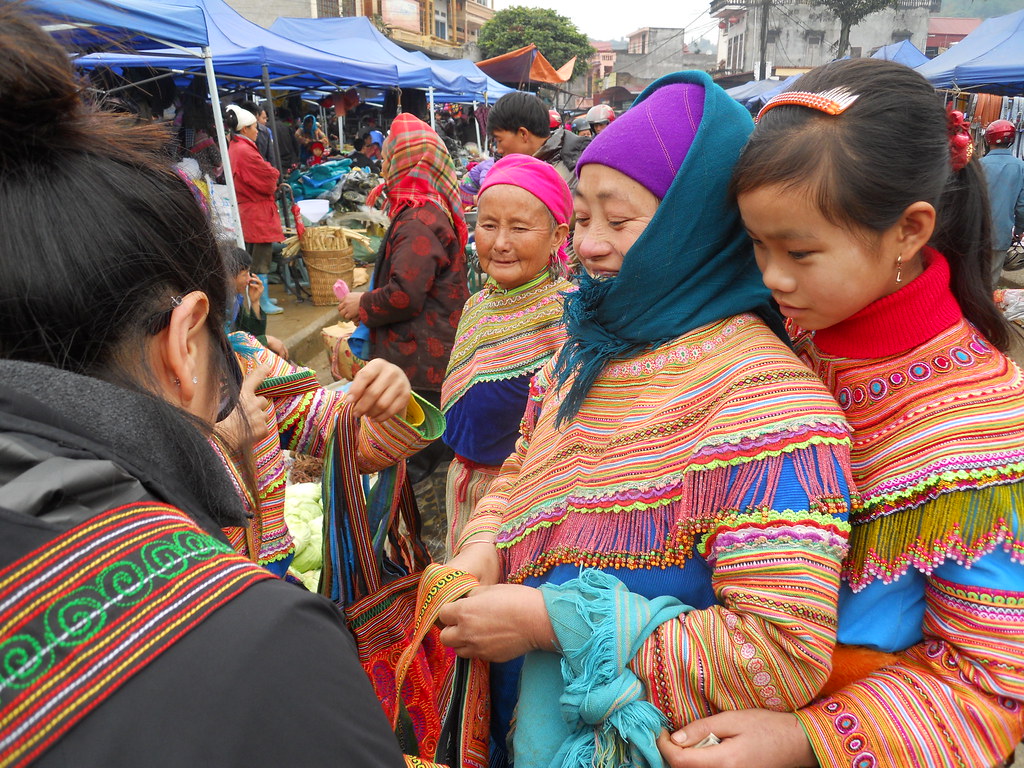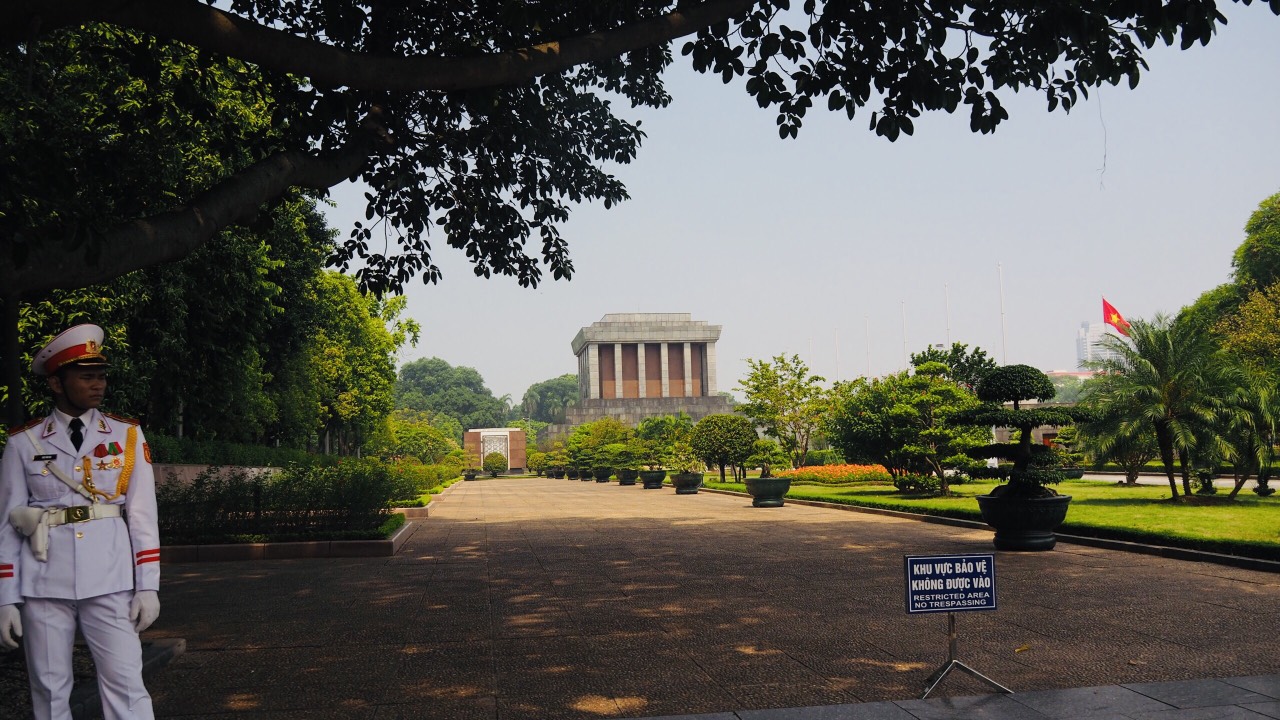
Ho Chi Minh’s mausoleum in Hanoi: everything you need to know
The Ho Chi Minh Mausoleum in Ba Dinh Square, where President Ho Chi Minh proclaimed Vietnam’s Declaration of Independence on September 2, 1945, is the final resting place of President Ho Chi Minh – the greatest and most iconic of Vietnam’s leaders. Around the Ho Chi Minh Mausoleum, the Vietnamese hold many major national events, such as the Hanoi Millennium Anniversary, Independence Day Celebration and President Ho Chi Minh’s Birthday Festival. Today, Ho Chi Minh’s mausoleum is open to domestic and foreign tourists.
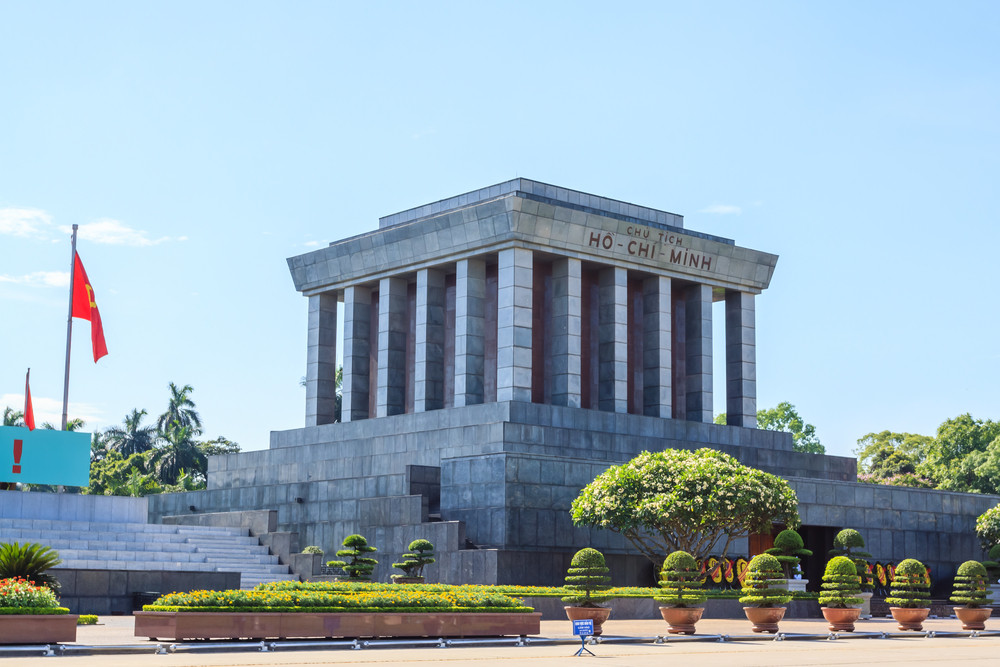
1. The preparation of the design of Ho Chi Minh’s mausoleum
The Planning and Urban Management Department, under the leadership of Nguyen Luong Bang, Tran Quoc Hoan and Phung The Tai, designed a plan to build the mausoleum after the funeral of President Ho Chi Minh. In January 1970, the government of the Soviet Union sent an experienced delegation to Vietnam to advise on structural engineering and design. The Soviet profession presented 5 plans for the design of the mausoleum.
Information about the construction of the mausoleum quickly spread throughout Vietnam. A competition was held for the design of President Ho Chi Minh’s mausoleum. All the outstanding designs were displayed to get the opinions of the community.
From May 1970 to August 1970, more than 200 projects were sent to the competition, of which 24 were presented at the exhibition in Hanoi, Hai Phong, Thai Nguyen, Son La and Nghe An districts. More than 745,487 people visited the exhibition and more than 34,002 people voted. The design of the Ho Chi Minh Mausoleum project alone took more than two years.
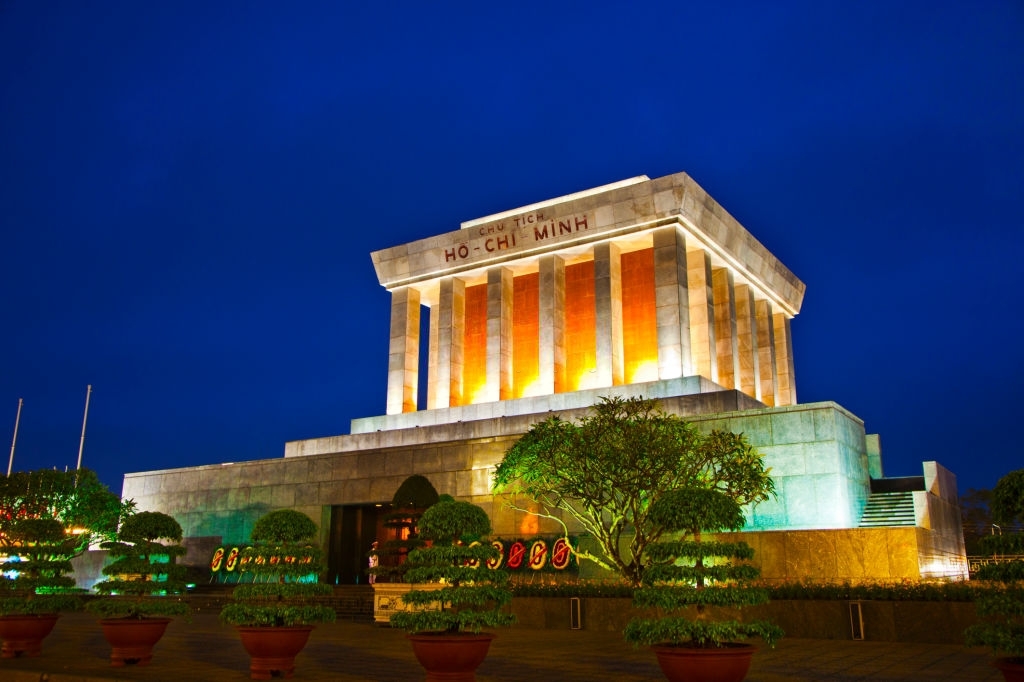
The construction of Ho Chi Minh’s mausoleum began on September 2, 1973 and was completed on August 29, 1975. It was carried out with great care and benefited from the contribution and support of all Vietnamese, both national and foreign.
2. Interior of Ho Chi Minh’s mausoleum
The entrance door was made of precious wood from the central highlands of Vietnam. The entrance hall of Ho Chi Minh’s mausoleum, paved with red and pink granite, features the letters “Không có gì quý hơn Độc lập Tự do” (Nothing is more precious than independence and freedom) as well as President Ho Chi Minh’s signature in gold letters.
At the heart of the mausoleum is the marble stone room where President Ho Chi Minh’s body is kept. On the wall, you can see the flag of Vietnam and the flag of the Communist Party, the 2 flags are made with more than 4,000 pieces of precious stones from Thanh Hoa district. The yellow star and the symbol of the Communist Party were made with citrine stones.
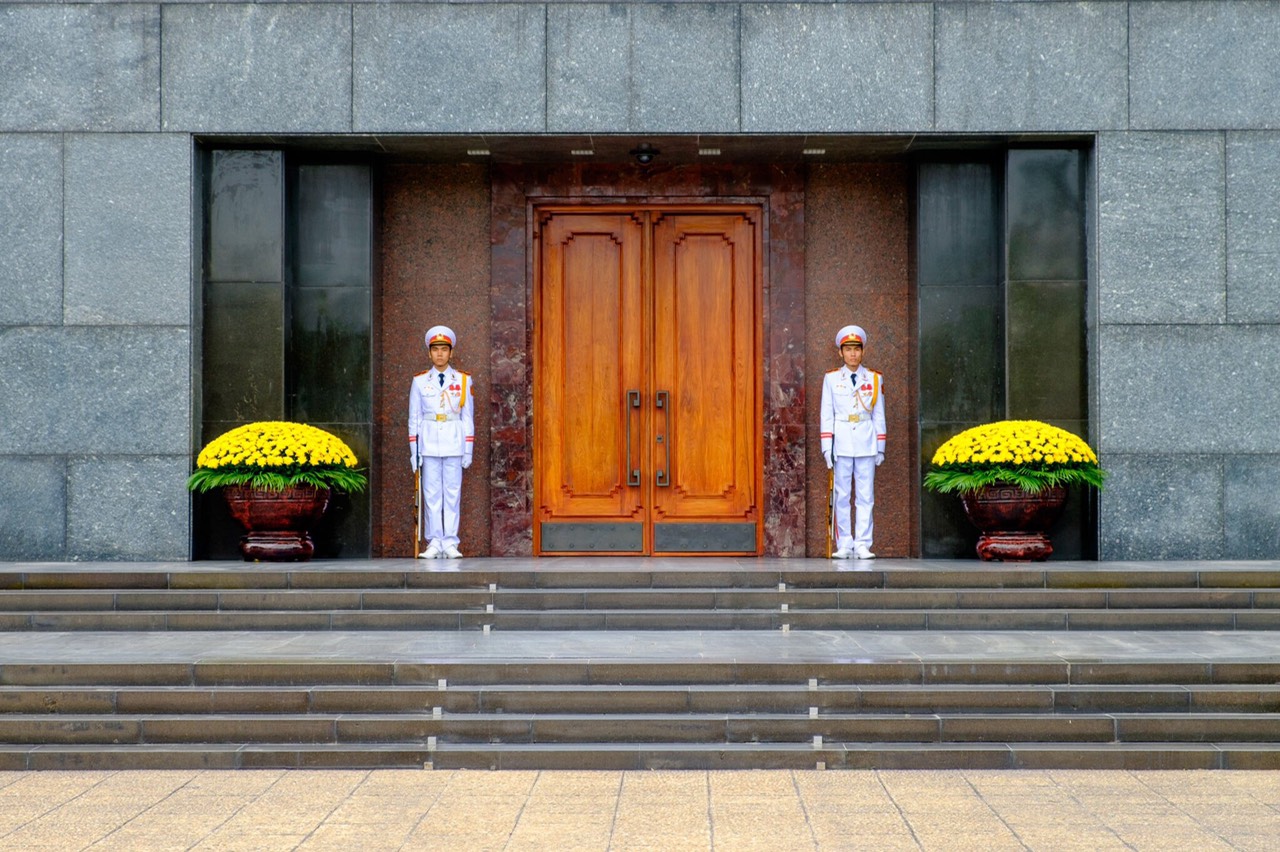 The embalmed body of President Ho Chi Minh was placed in a glass coffin. This coffin is the work of many talented and exceptional workers from Vietnam and the Soviets. The copper bed is shaped like a lotus. The three sides of the bed are made of tempered glass, visitors can see President Ho Chi Minh in his faded khaki clothing, his feet are shod with a simple pair of rubber sandals.
The embalmed body of President Ho Chi Minh was placed in a glass coffin. This coffin is the work of many talented and exceptional workers from Vietnam and the Soviets. The copper bed is shaped like a lotus. The three sides of the bed are made of tempered glass, visitors can see President Ho Chi Minh in his faded khaki clothing, his feet are shod with a simple pair of rubber sandals.
3. Exterior of the Ho Chi Minh mausoleum
Outside the Ho Chi Minh Mausoleum, you will find 79 Cycas trees, which symbolize the moral strength of President Ho Chi Minh and his 79 years. On the south and north sides of the Ho Chi Minh Mausoleum there are also two rows of bamboo trees, symbolizing the Vietnamese people.
In front of the Ho Chi Minh mausoleum is the flag tower. The raising of the flag takes place at 6:00 am every morning and the lowering of the flag takes place at 9:00 pm every day. After crossing the green zone, you arrive at Bac Son Street where countless red and pink roses bloom all year round. At the end of Bac Son Street is the monument of the martyr.

4. Tips for the visit
From the entrance gate near the Ho Chi Minh Museum, you will follow the line of people heading to the Ho Chi Minh Mausoleum. There is a long entrance hall to Ong Ich Khiem Street. The majestic Ba Dinh Square and the solemn mausoleum of President Ho Chi Minh will appear before your eyes. All you have to do is follow the line of people. When you are inside the Ho Chi Minh Mausoleum, don’t forget to follow the direction sign. This is a one-way road, so when you exit, you will be heading to another gate.
Be sure to follow some simple rules: proper dress (shoulders and knees covered, tank tops, shorts and skirts above the knee are not allowed), arms at your sides (no hands in pockets), no large bags or cameras, silence…
You might also like:





